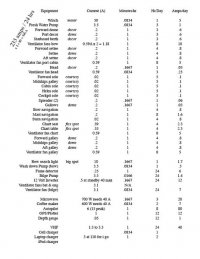There's really no need
There's really no need to do that. With a well built and properly sized 3 stage battery charger you can run your 12V devices and not discharge the bank. The newer three stage chargers, with float mode, can be left on nearly continuously and not cook the batteries.
Most 120V to 12V power supplies are limited in the amps they can put out and get very expensive very quickly. With a good charger you should never even get close to a 95% depth of discharge even when using 12v items while charging.
The battery charger is usually sized according to the type and size of the battery bank it is charging. Buying a "cheap" charger is generally a really bad idea, since it will often shorten the life of the batteries with it's lack of float mode or multi-stage charging.
What you need is a good smart charger. This means that the charger will go through the bulk, absorption and float phases of charging and step the voltage and amperage up/down as the charge level on the battery changes.
You did no describe or state how many amp hours your battery bank is or what type they are. The general rule of thumb for sizing is that the battery charger should be roughly 20-25% in amperage capacity of the 20-hour amp-hour rating of the battery bank. For instance, if you have a house bank of two 12 volt batteries, that would have a capacity of say 200 amp-hours, you'd want about a 50 amp charger, give or take.
It gets more confusing if you are using AGM batteries. These batteries have a much higher current acceptance rate meaning they can accept and take an entire 200 amps or more in an hour. If you have AGM's you might want a larger charger to utilize their higher current acceptance rate in the bulk phase or first phase of charge
You'll want a battery charger that can be set for the specific voltage requirements of the battery type you are using whether it be, wet, Gel or AGM. Not setting a charger up correctly can actually shorten the life of the banks.
I really like the Iota brad of chargers, sold mostly through "off the grid" companies. The 30 amp charger is about $127.00, the 45 amp unit $142.00 and the 55 amp is $167.00. Well built and reasonably priced.
Iota Chargers (LINK)

